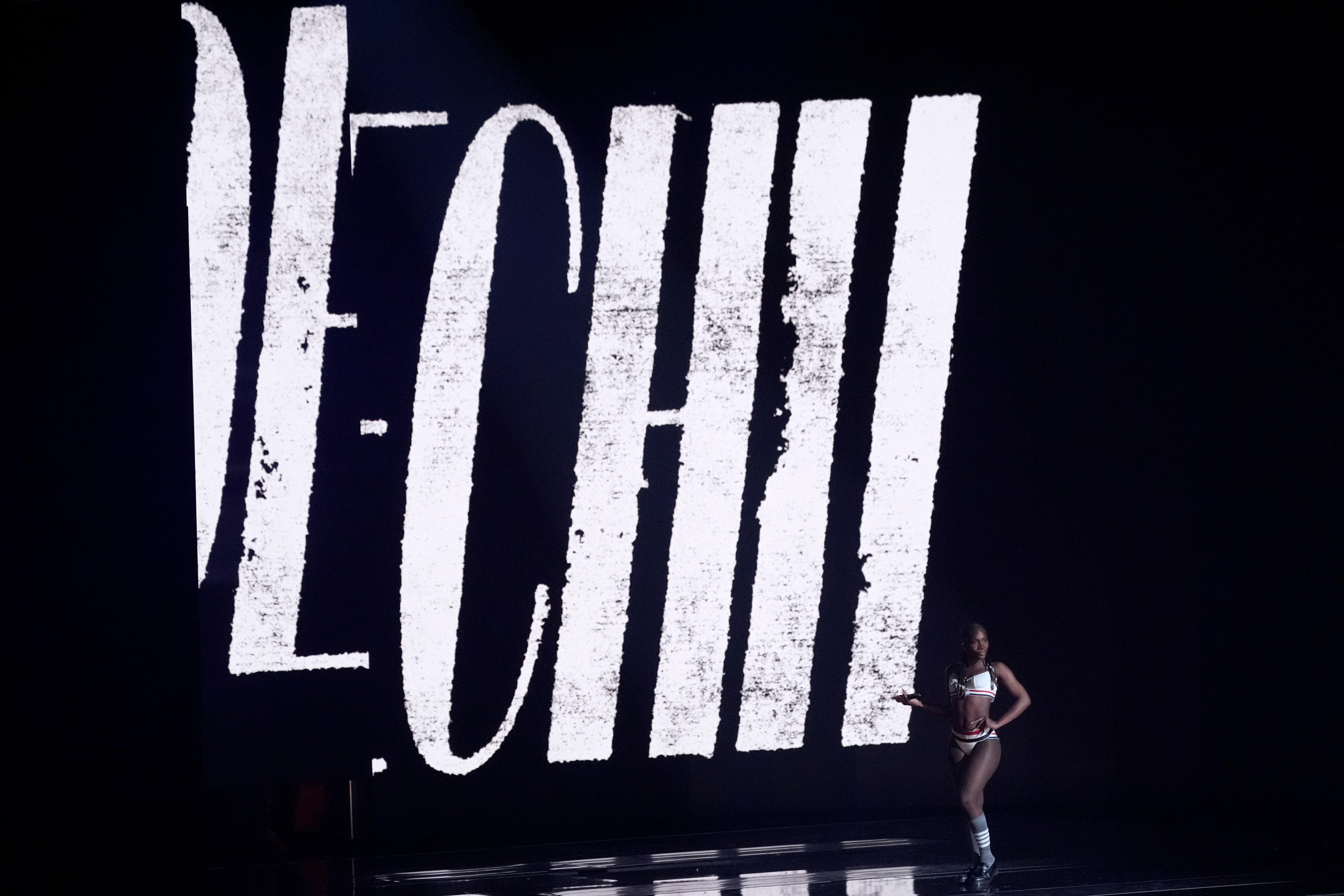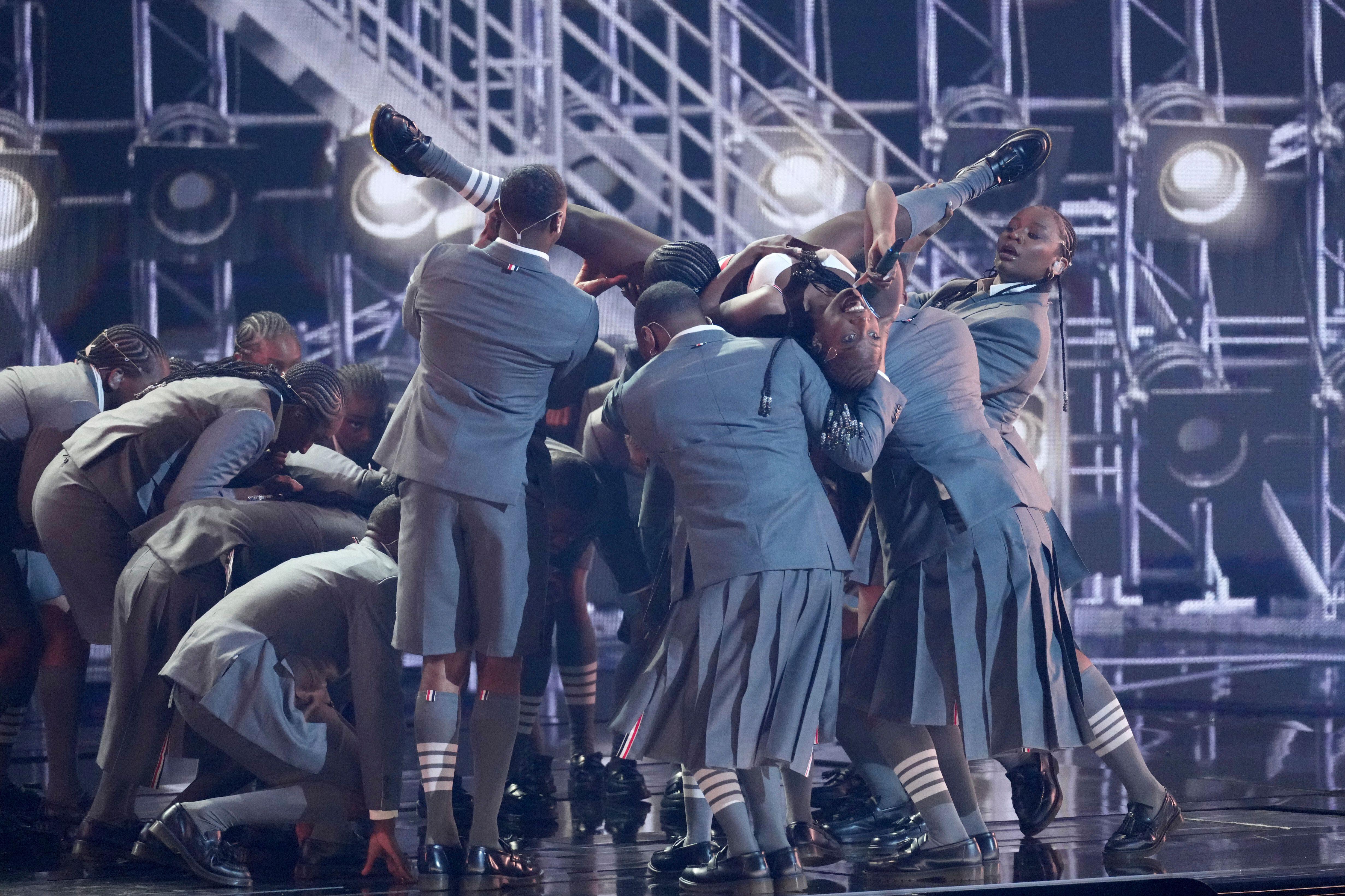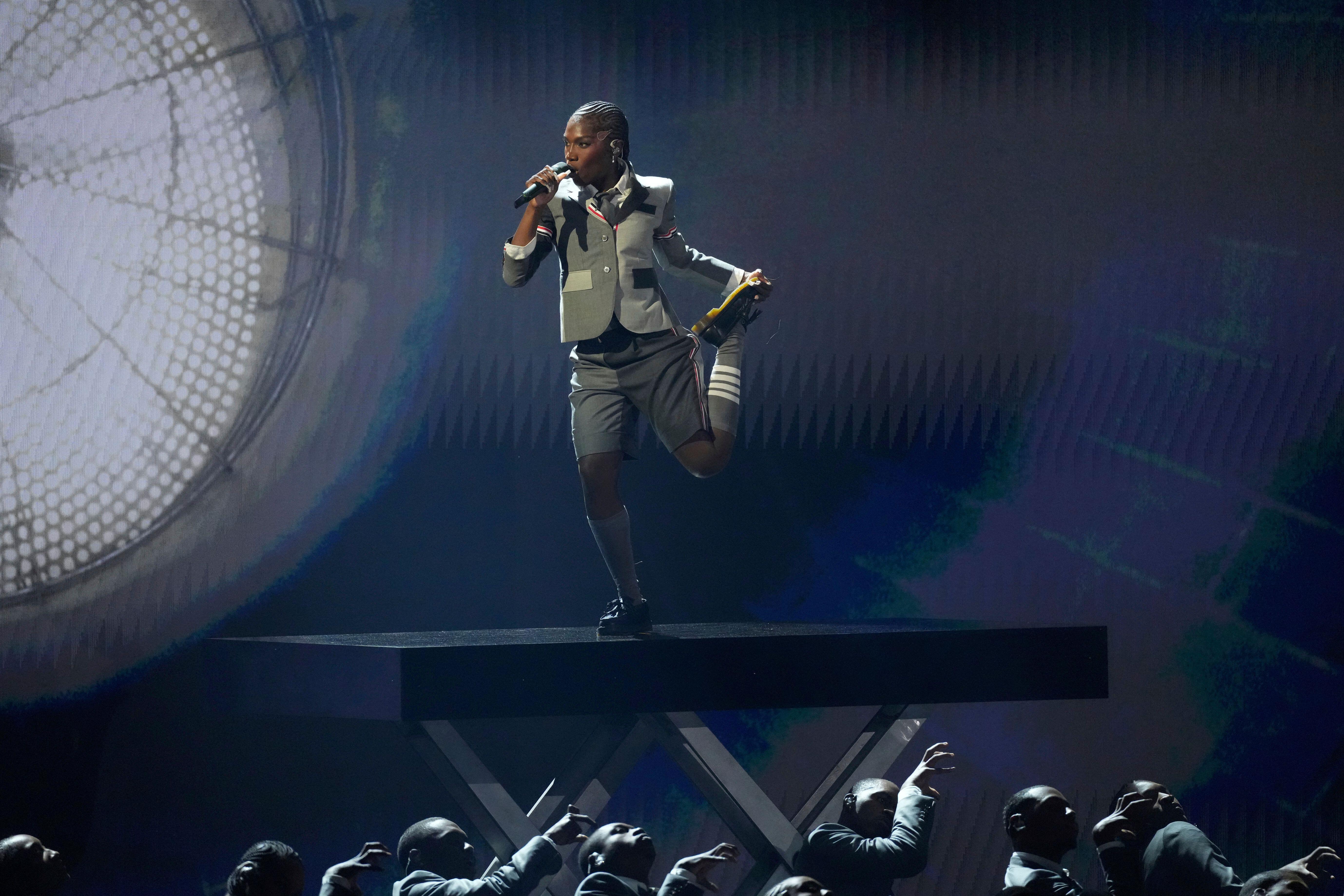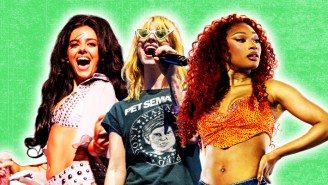One of the most exhilarating performances at the 2025 Grammy Awards came courtesy of Doechii. The Best Rap Album winner’s set began with “Catfish,” a booming track from her Alligator Bites Never Heal mixtape, before a costume change led into Hot 100-charting single “Denial Is A River.” If the Swamp Princess wasn’t already a superstar, she is now.
Doechii and creative director C. Prinz worked with Los Angeles-based design studio See You Later to bring the captivating vision for her Grammys performance — the clones! the conveyor belts! the flashing lights! — to life.
Ahead of the ceremony, I spoke to See You Later co-founders, TJ Hoover and Darrius Medina, about how the collaboration came to be, the exciting pressure of working on an award show, and their favorite Grammys moments.
How did See You Later first connect with Doechii?
TJ Hoover: We were brought on to work alongside her creative director C. Prinz. We really vibed aesthetically, and kind of felt that we were on the same frequency for what this performance was envisioned to be. We got brought on in early January, right before all of this started getting kicked off.
I imagine that one-month timeline to prepare for the Grammys came with some challenges.
TH: [Most of the Best New Artist] acts are back to back, so there’s no longer a long break between all these performances. And so what this required our teams to do is figure out, how do we design something that gets in and off the stage in 10 minutes, and is able to be executed and brought in and built extremely quickly? The Grammys being such a massive stage and presence to perform on, that adds its own pressures as well. I think that was probably one of the biggest challenges. The timeline, a month, is pretty quick [laughs].
Darrius Medina: Like TJ said, there’s so many acts playing that we don’t have a lot of time at the Grammys stage. One thing that we do at See You Later is a lot of pre-visualization of the show. We build this whole thing out in 3D, which gives the artists a chance to really see their vision brought to life and understand what it’s going to look like for the performance, and be able to make choreo changes, content changes, and go over lighting and things like that. That’s something that helps us out a lot when we’re doing a live performance versus a tour or festival, when we have more time to do rehearsals. You know, the full package.

When is the first time you see the stage in its completed form?
TH: The day before.
DM: There’s kind of like three performance areas: the inner left, the inner right, and then the front. So we have one of the sections where some of the headliners get the full stage. That was another part of the constraint that we had to work in, as well. The shape of the area that we had to design in wasn’t symmetrical; it was curved on one side and not on the other. So part of it was figuring out what’s going to look good on camera with choreography and stage shape and different angles and things like that.
What were the initial discussions between See You Later and Doechii about the performance like?
TH: This project started out with a couple different ideas. I think the clones were always a rounding idea in the creative, and the world that the clones lived in was something that was up for discussion. We went through different ideas and concepts and worlds. A lot of the reason we ended up where we were at was also because of the changeover times being so short. We had to figure out, how do we create something that was impactful, but also doesn’t take up a lot of real estate? The process has been a great creative collaboration with Doechii. She’s super involved with world-building and what she wants. I think with Prinz as well, she’s a phenomenal creative director and really has an eye for what Doechii is looking for.
DM: They have been great at providing the vision, and our role and specialty on this is bringing that to life and making it realistic and possible within the timeframe. So it was a perfect collaboration between all of us to share our expertise and be able to help each other and really just provide the best show possible.
“Denial Is A River” is a deeply personal song about depression and addiction, but there’s also a playfulness to it. How did you channel Doechii’s humor into the performance?
TH: Like you said, the song itself has a humorous undertone to it, and we’re playing with that with an old Hollywood-esque vibe. So whereas the first half of the show has speaker setups, lighting rings, and things that are a little more, I would say, edgy and theatrical and dramatic, “Denial Is A River” is more fun. The choreography gets a bit more uplifting. The lighting, as well, gets brighter and less dramatic and moody. They’re kind of doing a Chicago-esque vibe.
DM: Yeah, the ending is Chicago, old Hollywood, a little more vintage and a little more playful.

What are some of the technical considerations for when the dancers are off stage in the crowd? Are you focused on the lighting, or is it more logistical to make sure that no one trips?
TH: With this particular performance, it’s a pure lighting thing. We don’t have any video walls or anything like that out there. It’s more about the tone of the dancers, you know, being at these guest tables in the crowd, interacting with the guests that are there before we move to the shot of Doecchi and the rest of the clones on stage. It acts as an element of surprise to keep the viewer on their toes in the first couple of seconds of the performance.
DM: I think as well, we’re looking a lot into cameras, and that’s something that working with Prinz and Doechii and really thinking of it from a viewer’s perspective. Most people are watching it on TV, obviously, and when we can incorporate some of those unique shots, it kind of breaks it up from the other performances. Like you were saying before, it’s almost a competition sometimes. How can we differentiate ourselves from some of these other performances and create unique shots and looks?
Do you have any personal favorite Grammys performances?
TH: There’s been quite a few. I think the Tyler The Creator one from [2020] was probably one of the best. I think it was from the album with “Earfquake,” and he did a death fall in the back. That was probably mine.
DM: I really liked, I believe it was last year, Dua Lipa where they had scaffolding and really used the entire room, which was cool, and really utilized cameras and content and creating different moments. That was very high energy, and one of my favorites that I’ve seen in recent years.
When you’re working on an awards show, is there a competitive element to come up with the “best” performance? The one that everyone is talking about the next day?
TH: That’s interesting, yeah. I mean, I think with any of these big shows, whether it’s Coachella or the Grammys or anything that has a lot of viewers, we all want to be the best, right? And so I think, when you’re on a stage with a bunch of other artists with time constraints and all these things that are going against you having the best performance that you can, the pressure is definitely there. It has to feel unique. There’s always those one or two performances that everyone’s talking about and becomes one of those historical Grammy shows. I think everyone involved wants to be one of those historic performances.








